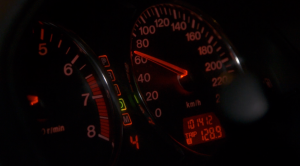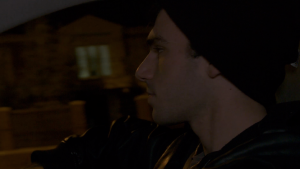MY METHOD OF WORKING Pt 11
In my final video exercise/ practice shoot before the actual film production, I decided I would dedicate my investigation to find the most efficient methods of shooting close-ups within my chosen environment for the film. Ultimately, I knew before this exercise that close-ups would be more easier to capture on camera than wide shots, not only due to the fact that most of the lenses I have available to me are canon zoom lenses, but additionally due to my camera’s crop factor (Which I have briefly discussed a couple blog posts ago). Despite this, the only issue when it comes to shooting close-ups, which is something I have detected from my years of filmmaking, is that close-up shots have the tendency of depicting shakier camera movement more explicitly when shooting handheld than the shakiness which can be seen in a medium or wide shot.
With this in mind, in addition to all my equipment which I have used throughout all my video exercises, I took a pillow to place between the lens and the chair which my camera rests on in the car, to see whether or not I can reduce the shaky motion of the cinematography caused by the unbalance between the camera and the attached lens which is longer and heavier than the camera itself. This worked rather effectively as I was able to achieve smoother cinematography simply by using the pillow as extra support to eliminate any shakiness caused by the weight differences.
In regards to the camera coverage itself, I realized that the only lens I actually need to efficiently shoot close ups on set, within the limited time I have on production, was with the canon 24-70mm F2.8. Out of the two other lenses I had experimented shooting with on the exercise, this particular zoom lens was far more lightweight than the canon 24-105mm f4 lens and had the ability of capturing higher levels of natural light and depth of field while reaching as high as an F2.8 an aperture setting, which beats the highest aperture obtainable on both the canon 24-105mm f4 and the 18-55mm F3.5-5.5 lenses.
From this exercise I also decided to see whether or not it would beneficial for me (aesthetically speaking) to shoot the driver from different angles. Although switching positions from the back seat to the side passenger seat was quite a lengthy process of the driver pulling over to the side of the road and waiting for me to adjust the camera to be utilized suitably in my restricted space, I liked the idea of having an addition angle to shoot in the car, as I was happy with the alternative shots I was able to obtain from the front of the car which would be harder to capture from behind the driver.
Overall, I believe all the camera tests I conducted leading up to my final film shoot, were essential towards the planning of my film. Each time I had the opportunity to practice shooting these scenes, I was able to progressively develop my technical knowledge, which will definitely enhance not only my ability but also the efficiency of filming my final film for this course.
VIDEO LINK:
https://drive.google.com/a/rmit.edu.au/file/d/0B_EHaIpWZ2UNLXU1cUhPWDBrOVk/view?usp=sharing






